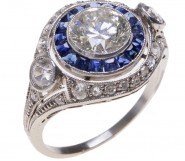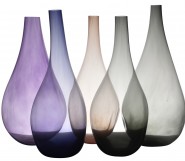Lot #175 - A Florentine gilt and polychrome gesso relief of the Madonna and Child, Italian, mid 15th century
-
Auction House:Mossgreen
-
Sale Name:An Important Private Collection
-
Sale Date:14 Sep 2014 ~ 2.30pm
-
Lot #:175
-
Lot Description:A Florentine gilt and polychrome gesso relief of the Madonna and Child, Italian, mid 15th century
77cm high x 53cm wide -
Provenance:Graham Cornall Antiques, Melbourne
-
Notes:In late medieval and Renaissance Italy, devotional activities took place in the home as well as in churches. Well-to do families might have a number of religious artworks throughout the house. Images of the Madonna and Child were often placed in the bedroom as a devotional focus, especially intended for women. It was, in particular, popularly believed that the contemplation of such images by pregnant women could help ensure the arrival of a healthy child.1 The image of the Madonna and Child moreover provided an exemplar of ideal motherhood as well as a familiar, comforting image that the Virgin Mary had shared similar human experiences and might therefore offer an empathetic ear to the supplicant devotee. Hand in hand with the demand for such domestic devotional works was the requirement that they show a familiar, accessible image. Madonna and Child images therefore show the child nestled in his motherÕs arms but engaged in behaviour common to all babies. This work accordingly shows the child in the act of embracing, but also moving and twisting about as his mother holds him. The work also demonstrates a poignant feature common to many Renaissance images of this type. The heads of the Madonna and Child are inclined lovingly towards one another. The Christ Child looks out, purposefully, as if in acceptance of his destiny while his MotherÕs sorrowful gaze indicates prescience of her sonÕs fate. Such imagery provided an incentive to meditate on the humanity of Christ and the sorrow of his mother. The Virgin Mary is clothed in a brilliant red gown and the characteristic blue robe, tinged with gold. She also wears a distinctive white scarf with blue stripes that loops about her upper chest and around her head. The workshop of Lorenzo Ghiberti produced a number of these popular images. These were initially molded then coated with stucco and painted and gilded. It has been suggested that these were modelled on a now-lost original work by the master, Ghiberti.2 A recent exhibition in the Palazzo Strozzi, Florence, displayed two comparable works.3 One, belonging to the collection of the Venerabile Arciconfraternita della Misericordia, Florence (inv. 10260), is particularly similar in composition and clothing details. The catalogue entry for the exhibition suggests a dating of the late 1430s. Dr. Bronwyn Stocks 1 Elizabeth Currie, Inside the Renaissance House, V&A Publications, London, 2006, p.55 2 Richard Krautheimer, 'Terra Cotta Madonnas,'ÊParnassus, VIII, no. 7, Dec. 1936, p. 7. 3 The Springtime of the Renaissance. (edited by Marc Bormand, Beatrice Paolozzi Strozzi,ÊThe Springtime of the Renaissance: Sculpture and the Arts in Florence 1400-60, Florence, Palazzo Strozzi, 23 March - 18 August 2013; Exhibition catalogue: Florence, Palazzo Strozzi, 23 March-18ÊAugust 2013. Organised byÊFondazione Palazzo StrozziÊand MusŽe du Louvre, pp. 426-429, nos. VIII.2-3). 4 Antonella Nesi,Êop. cit, p. 428
-
Estimate:A$10,000 - 15,000
-
Realised Price:
-
Category:Unclassified
This Sale has been held and this item is no longer available. Details are provided for information purposes only.










